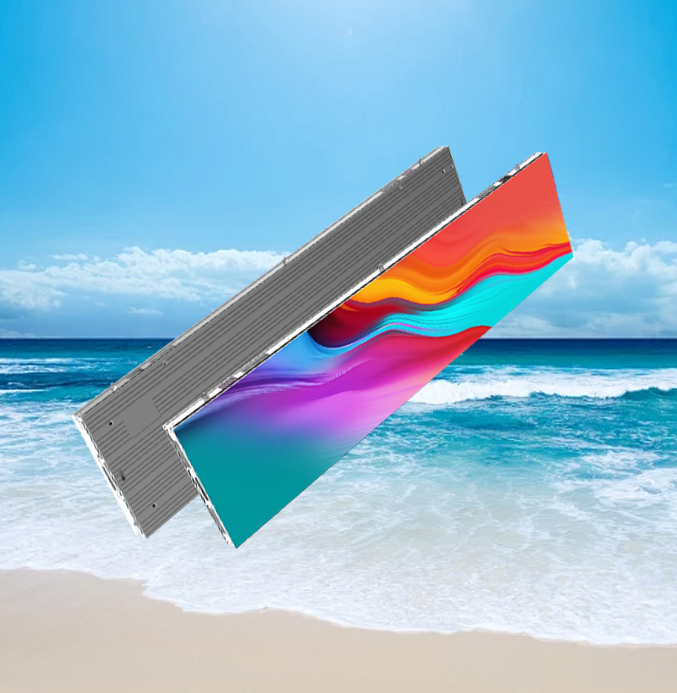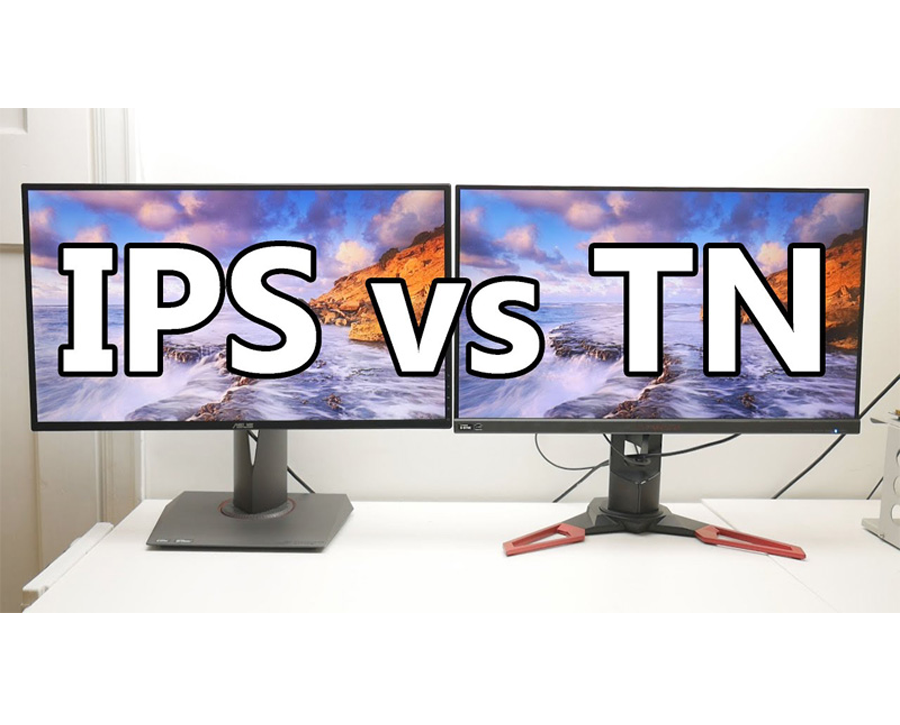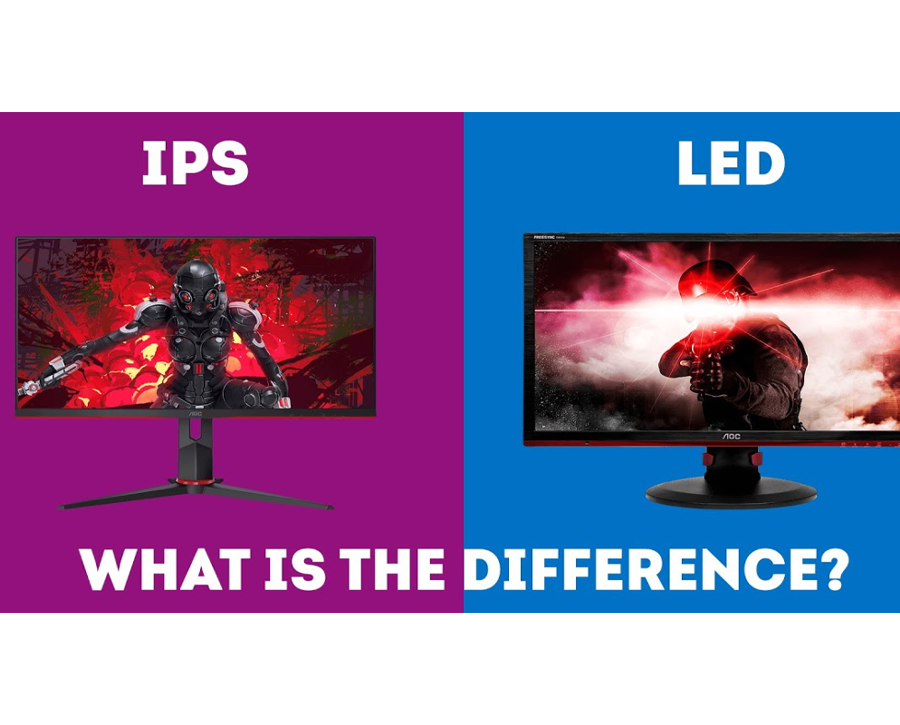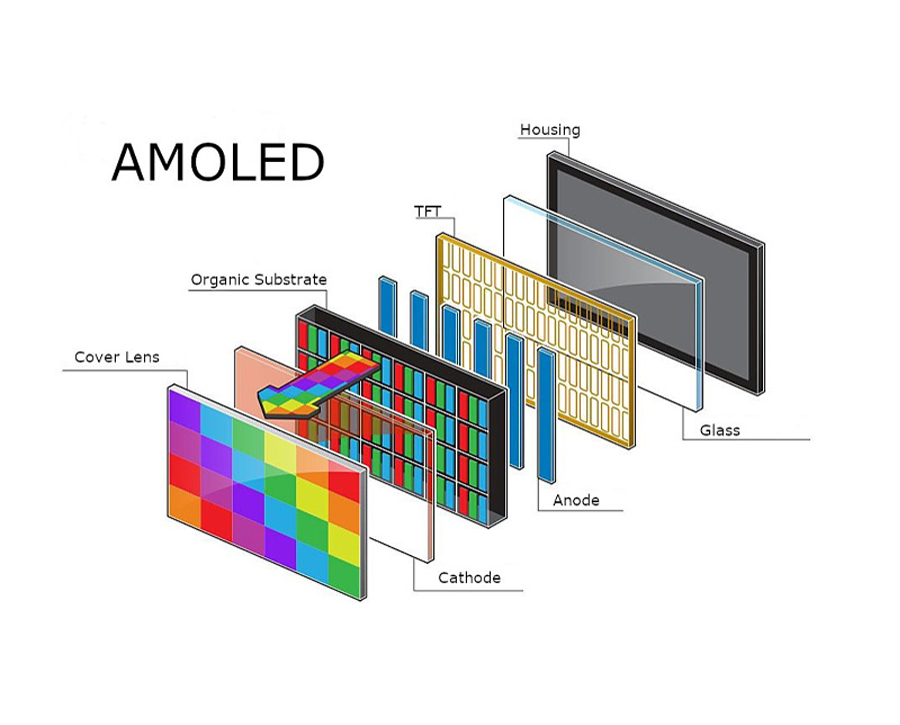
Displays play a great role in every type of work. Selecting an appropriate one is vital. The most popular types these days are LED and IPS displays. Each of these has its unique features, benefits, and disadvantages. This comparative overview will help you decide appropriately.
What is a LED Display?
LED, a kind of LCD, that uses light-emitting diodes so that an illumination or back-illumination of the background may be made. As opposed to traditional forms of LCDs that use cold cathode fluorescent lamps. A LED display is much more energy-efficient, slimmer, and capable of higher brightness.
The LED display architecture is not particularly complicated. In its structure, there is a liquid crystal layer to act on the light to develop images and a backlight consisting of LEDs to light the screen. These LEDs may either be placed along the sides of the screen or throughout the back of it. Full-array LEDs tend to include local dimming, wherein the brightness in portions is dimmed to enhance contrast.
Applications abound in implementing LED technology, from handheld smartphones and laptops to wall-sized television screens and commercial signage.
Some advantages of LED displays are their energy efficiency. Thus lesser electricity consumption. Brighter than most display technologies. It is recommended to place them in rather lighted areas or even outside. They have a very long life and most of them usually last more than 50,000 hrs of use. These have been steadily growing popular with today’s lighter and slimmer sized electronics such as mobile phones and portable music players.
Even with these plus points, there are some downsides to LED displays. They usually have issues with color accuracy and viewing angles compared to technologies like IPS. Edge-lit LEDs, in particular, may show inconsistencies in screen brightness. While generally cheap, high-end models with advanced features such as local dimming can be quite expensive.
What is an IPS Display?
In-Plane Switching is the full meaning of IPS. It is one of the types of LCD technologies which was designed to eliminate some of the disadvantages of using the initial LCD panels. This technology in this way enhances the color models and the angle of view possible, which are quite useful in instances that need highly accurate vision.
What sets the typical IPS panel apart from other panels is how its liquid crystals are oriented. Whereas traditional TN panels twist the crystals. IPS crystals remain parallel to the screen, which allows light to pass through with much more evenness. The result is that true colors are achieved and retained across any given angle of viewing.
IPS technologies have currently defined the usage in professional displays commonly used among graphic designers, photographers, and video editors. Thanks to its low-delta E it can recreate a broad range of colors, which is useful for colour accurate applications.
IPS also offers better viewing angles and typically go beyond 170 degrees of both the horizontal and vertical plane. This means colors and brightness levels are good even when you are viewing the screen off to the side of your line of vision.
IPS displays are not devoid of drawbacks. They generally use more power than LED displays, translating to higher energy costs over time. They are also far more expensive, and that is taken into consideration when setting prices for the consumers. There are certain complaints about the backlight in IPS panels including backlight bleed, where light seems to seep around the edges of the screen. Early IPS models were also criticized for their slow response times. Although, modern panels have all but eliminated this problem.
Key Differences Between LED and IPS Displays
Compared to LED displays, there are several major differences.
First of all, regarding picture quality, the LED display shows great brightness, which will work in an environment where the ambient light is too high. However, they generally fall short in their color accuracy and consistency when compared to IPS panels. Regarding colors, IPS displays provide richer and more vivid colors, and color accuracy is maintained all over the screen.
Another point at which IPS displays decidedly have the upper hand is in viewing angles. While LED displays tend to lose color accuracy and brightness when viewed from the side. IPS panels maintain consistent visuals even at extreme angles. This makes IPS displays ideal for collaborative environments or setups where multiple people view the screen simultaneously.
Response time and refresh rate become critical in gaming or fast-motion applications. Most normal LED displays have faster response times that tend to reduce blur in dynamic scenes. Modern IPS displays for gaming achieve comparative response times and higher refresh rates, sometimes over 120Hz.
Other factors include energy efficiency. LED displays have lower power consumption since their backlight technology is more advanced. Therefore, for users who would want to save on energy, they are the best. However, IPS displays usually draw in more power. Especially when operating at higher brightness.
In terms of lifespan, both technologies are durable, with the LED display generally lasting longer than its counterpart because of its much simpler construction. While relatively robust, IPS panels will often develop problems such as backlight bleeding over time.
Price is often a driving factor. LED displays are commonly more budget-friendly, catering to a wider audience because of their affordability. Being a bit more expensive. IPS displays offer superior performance when it comes to specific applications or professional work.
Durability also differs between the two. LED displays are designed to be used for long hours. Thus making them quite reliable for signage and other commercial purposes. As for IPS displays, they are durable, but a little more care is needed to avoid damaging the complex arrangement of liquid crystals.
Best Use Cases for LED Displays
LED displays, on the other hand, are ideally suited for situations where brightness and energy efficiency are a concern. They work great in well-lit environments such as living rooms with big windows or even outdoors. With their high brightness, the images will remain clear under direct sunlight.
The general-purpose usage is another ground for LED displays. They work perfectly well in watching TV, browsing the web, and office work. Energy efficiency guarantees that they are economically viable displays for users looking to save on electricity bills.
LED displays are equally used in commercial applications. Digital signage, for example, uses LED technology to render bright and eye-catching visuals that can run continuously over long periods. Their sleek and lightweight design makes them both easy to install and mount in various settings.
Best Use Cases for IPS Displays
IPS displays are, to this day, considered workhorses for professionals that want accurate and consistent visuals. Graphics designers, photographers, video editors-they all prefer IPS technology for showing the real look of their works. The wide color gamut and precise color reproduction on the IPS panel make them important in color-critical works.
Then there is gaming, in which IPS displays shine very much. Early IPS monitors suffered from slow response time. But modern variants support fast refresh rates and low input lag. The vibrant colors, paired with wide viewing angles, make the gaming session in visually rich titles particularly pleasant.
For multitaskers, IPS displays offer seamless performance. If you use multiple monitors, the consistent color reproduction of IPS panels ensures a cohesive viewing experience. This makes them ideal for professional setups that require extended screen real estate.
Streaming and multimedia consumption also benefit from IPS technology. The vivid colors and high-quality visuals of IPS displays make movies, TV shows, and online content more enjoyable.
LED vs IPS for Gaming: Which One Is Better?
It needs a display that can match the fast action and deliver excellent visuals. The key features to consider between LED and IPS for gaming include refresh rates, input lag, and overall performance.
LED displays are also known to have fast response times. This reduces motion blur and heightens clarity in fast-moving shots. This makes them quite ideal in competitive gaming where split-second decisions may be the reason for winning or losing. Again, their brightness is well-suited to well-lit gaming setups.
IPS displays are a whole different story when it comes to visual quality. Rich colors, wide viewing angles-they’re perfect for story-driven or visually intensive games. Many modern IPS panels boast 120Hz refresh rates and even higher, which can rival many LED gaming monitors. Input lag has also been much better in newer models, making IPS viable for competitive play.
Ultimately, the decision will come to personal preference and your end use for gaming. If your aim is high refresh rates, LED may be a better option. For colors and visual immersive details, consider an IPS display.
LED vs IPS Professional Use
For professional users, though, the choice will depend on their specific demands when it comes to either LED or IPS displays.
Graphic designers need accurate and consistent colors to ensure their designs look the same across different devices. On this count, IPS is a clear winner with wide color gamut and perfect color reproduction.
The advantages of IPS technology also trickle down to photographers. Being able to capture subtle color variations and shading is important during photo editing. Consistency in performance, as facilitated by IPS panels, helps ensure that what appears on the screen matches exactly with the printed images.
For video editors, color grading and minute details require accurate display, for which they use IPS displays. With wide viewing angles, it helps people working in a group in the same room.
For office work and general productivity, LED displays will suffice. Their brightness and energy efficiency make them practical for such tasks that don’t require high color accuracy.
Conclusion
LED and IPS displays both have their strong and weak points. LED displays are bright, power-saving, and durable, while IPS panels excel in color accuracy and viewing angles. Your choice should be guided by your needs. Whether it is for gaming, professional work, or everyday use.

Enter the digital world with our advanced display technologies.





